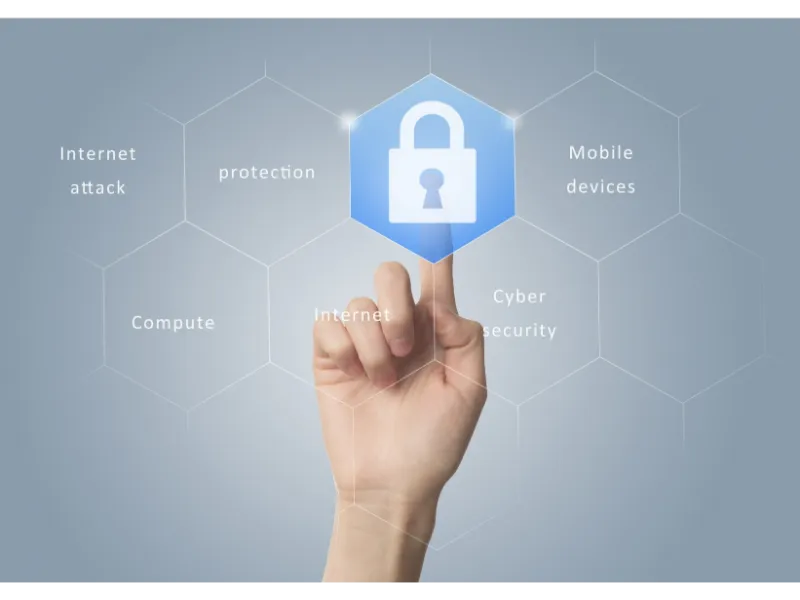- Cybersecurity originated in the 1950s with the advent of computer networks and modems, evolving into modern cybersecurity in the 1960s with the establishment of ARPANET, the precursor to the internet.
- The development of the internet exacerbated cybersecurity challenges, leading to increased incidents of phishing, malware, and targeted network attacks to steal personal information.
- The AI era has introduced more complex cyber threats, including deepfakes, supply chain attacks, and advanced phishing methods, prompting the cybersecurity industry to leverage artificial intelligence for enhanced defence strategies.
Cybersecurity refers to the protection of information and data on the internet, ensuring confidentiality, integrity, and authenticity during their transmission, for entities ranging from government institutions and social enterprises to individual users. It aims to prevent others or adversaries from eavesdropping, impersonating, tampering, and other means of infringing on the interests and privacy of individuals, businesses, and organisations.
Origins of cybersecurity
Cybersecurity emerged when the first batch of computers could connect and exchange information, dating back to the 1950s with the advent of the first computer networks and modems. However, it wasn’t until the 1960s that modern cybersecurity began to take shape. In 1969, the birth of the internet was marked when the Defence Advanced Research Projects Agency (DARPA) of the U.S. Department of Defence sent a message from the University of California to the Stanford Research Centre, officially establishing the ARPANET, the precursor to the internet. This milestone event not only marked the birth of cyberspace but also laid the foundation for cybersecurity.
In 1971, researcher Bob Thomas developed the first computer virus, called Creeper, which spread through ARPANET and sent a message to infected devices saying, “I’m Creeper, catch me if you can.” Subsequently, Ray Tomlinson, the inventor of email, developed a program called Reaper to track down and eliminate Creeper. This event marked the birth of the concept of cybersecurity, with Tomlinson’s program considered one of the earliest antivirus software.
Also read: Is Huawei Android a good phone?
The development of the internet exacerbates cybersecurity issues
Entering the 21st century, the rapid development of the internet further highlighted cybersecurity issues. More and more personal information is stored online, including bank account details, emails, and social media accounts. Hackers began using phishing emails, malware, and targeted network attacks to steal identity information and passwords for fraudulent activities. To address this, governments and organisations worldwide increased research and investment in cybersecurity.
However, as technology evolves, cybersecurity challenges also evolve. The widespread adoption of mobile internet and the development of the Internet of Things (IoT) expanded cybersecurity concerns to devices like smartphones and smart homes. Hackers utilise wireless networks, Bluetooth, and new attack methods such as social engineering and online scams. To tackle these challenges, continuous innovation and improvement in technology and regulations are ongoing. Many countries and organisations are implementing cybersecurity laws, standards, and regulations to protect personal information and privacy. Furthermore, cybersecurity companies are developing and updating security technologies to provide stronger and smarter protection measures.
Also read: What are the best AI art generators?
The AI era changes the cyber environment
In recent years, cyberattacks and ransomware attacks have become increasingly complex, from supply chain attacks to artificial intelligence; new attack vectors continue to emerge. Unfortunately, industry experts predict that with increased connectivity among enterprises and society, global cyberattacks and new phishing methods are bound to increase. Artificial intelligence technology has heightened the frequency, speed, and efficiency of threats, marking a new turning point in the evolution of cyberattacks. Technologies like deepfakes are attempting to impersonate individuals and companies to steal information, phishing attacks are becoming more deceptive, and the development of ransomware and malware variants is becoming faster and more cost-effective. As cyber criminals rapidly advance their technical capabilities, the cybersecurity industry is leveraging artificial intelligence to upgrade its defence methods to keep pace with technological advancements.

